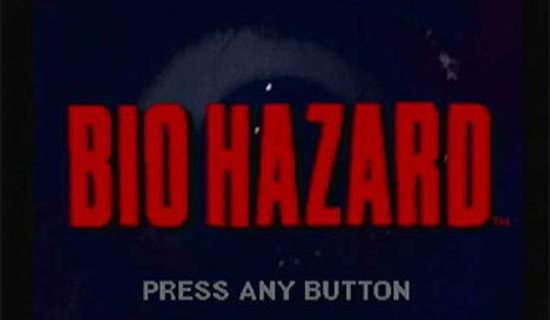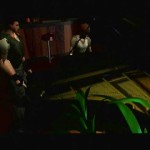Horror inspired games have taken many forms over the years. It’s hard to say what the earliest example of one is, but there were two that very notable influenced the creation of Bio Hazard/Resident Evil: Sweet Home and Alone in the Dark. The funny is that these games couldn’t have been more different.
Sweet Home was a Capcom developed and published RPG on the Famicom back in 1989, based on the psychological horror film of the same name from famed horror director Kurosawa Kiyoshi. It is sometimes argued that Sweet Home was in fact the originator of the survival horror genre, given the game’s heavy emphasis on the concept of survival. The idea is certainly arguable, but the traditional RPG trappings feel far too strong for this to have been what most consider to be a survival horror game. Its influence on Bio Hazard/Resident Evil is undeniable though: Opening door screens for transitions between areas (obviously this was used to cover load time in RE, but was likely just used for atmosphere in Sweet Home), a mansion setting, a heavy emphases on puzzles to progress, story telling through diaries and journal entries, a very limited inventory in which to manage items and just a general lack of fear of using a certain amount of gruesome and horrific imagery. That the original Bio Hazard/Resident Evil was originally planned as a sort of remake of Sweet Home should come as little surprise given all of this.
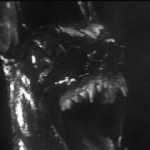 |  |
| The Cerberus dogs as portrayed in the opening cut scene… | It takes real effort in hair maintenance to look this good! |
Alone in the Dark’s influence, however, is a bit more of a surprise. The reason that it is such a surprise is that it was a completely western developed game. These days it is not uncommon for Japanese developers to take many queues from their western counterparts, however back then the Japanese were still leading cutting edge console game development and did not necessarily pay much attention to what was going on in the west. None the less, Alone in the Dark was unmistakably a factor in the creation of Bio Hazard/Resident Evil. It not only took place in a mansion, but also was a 3-D game using polygonal characters over pre-rendered backgrounds. It’s considered by many to be the first real survival horror game as we’ve come to know them today.
Bio Hazard/Resident Evil also took queues from quite a few movies. I’ll leave it to the film scholars for a thorough analysis of this, but the most obvious film inspirations this first game has is George Romero’s Dead series (Night of the Living Dead, Dawn of the Dead, etc.), which are considered to be seminal works in the creation of the ideas of what zombies are in popular horror culture.
It’s also important to know a little bit about the master mind behind and director of the first game in the series, Mikami Shinji. Mikami’s first credit in the industry was that of a planner for a couple of Capcom Game Boy titles: Capcom Quiz: Hatena? no Daibouken and Who Framed Roger Rabbit. This was certainly not a very prestigious start considering what he would go on to create later, but shortly after these two titles he moved on to Capcom’s version of Aladdin for the Super NES/Super Famicom, as well as Goof Troop. Two years later he would go on to direct Bio Hazard/Resident Evil. Of course after that he made even more of a name for himself by being involved in titles like Dino Crisis, Devil May Cry, Viewtiful Joe, God Hand, as well as continued involvement with the Bio Hazard/Resident Evil series for awhile.
Most reading this will be somewhat familiar with this series, so I’ll cut the story explanation of this first game short by saying that this is the story of the S.T.A.R.S. (Special Tactics and Rescue Service) Alpha Team (consisting of Chris Redfield, Jill Valentine, Albert Wesker, Barry Burton, Joseph Frost and Brad Vickers) division of the Raccoon City Police investigating strange incidents involving the disappearing of S.T.A.R.S. Bravo Team (consisting of Enrico Marini, Kenneth J. Sullivan, Richard Aiken, Edward Dewey and Rebecca Chambers). They arrive on the scene to find all sorts of unexpected surprises, and end up escaping to a large mansion where the story begins to unfold.
This introduction is presented through full motion video cut scenes, featuring real actors. Full motion video games had not completely gone away by 1996, but they were definitely out of style. Though it provides for a lot of hilarity, one can’t help but wonder why Capcom decided that this would be the best way to open the game when these cut scenes would not make a return until the ending. The game’s dialog writing and voice acting are of a quality to match that found in the intro scenes (all in English, even in the Japanese version), and I won’t bother quoting any of the many famous lines to come out of this first game. The obviously budget presentation may bother some, but for many it has given this game a strangely endearing quality for much the same reason why people like bad B-movies. Also games hadn’t had good enough hardware for long enough to set a very high standard for voice acting at this point.
As the game begins, you’re immediately given a choice as to which character you want to play as: Jill (presented as easy mode) or Chris (presented as hard mode). The general differences are that that as Jill you have access to more ammo and health items (even a weapon that Chris is never able to use), can open locked drawers without the aid of keys, have 2 more inventory slots, but you have less health. As Chris you can reverse everything just mentioned, so which is easier and which is harder really all depends on how what you value most. It also depends on your play style, to which it must be pointed out that a lot of people tend to play this game the wrong way. I certainly did the very first time that I played it. Even as Jill, you are not meant to shoot every zombie or creature that crosses your path. You are meant to try and avoid them when you can, killing only the ones that you can’t get by or inhabit rooms that you will be frequently passing through. If you can learn to play this way, you’ll find that a game that is still known for being difficult and unkind will become somewhat less so.
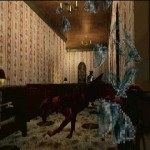 |  |
| Probably one of the actual scariest jump scares of the game: Cerberus jumping in through the windows out of nowhere! | Taking on Yawn the best way possible: With the Grenade Launcher! |
The other big hurdle to overcome is the control scheme. There had not been many 3-D games at this point, so there was no universally accepted way that a character should control. The scheme attached to Bio Hazard/Resident Evil has come to be known as “tank controls”. This is because the character moves somewhat similar to how a tank would: Up on the D-pad to move forward, Down to move back, and left and right to pivot the character’s side corresponding to the direction. People would later cite that this control scheme adds to the horror element of the game, with the thinking that in a similarly stressful situation a person would not necessarily be fluidly moving about either. Whether or not this is just an excuse, I do think that there is some validity to it. Not only that, but tank controls aren’t even overly difficult to adapt to once you’ve put a little bit of time in.
As either character you will travel through the mansion and surrounding areas collecting ammo and health items (all of which are found in fixed positions, and are never dropped by enemies), killing or avoiding enemies and bosses, solving puzzles that frequently involve moving statues or boxes to specific positions, meeting up with and sometimes saving or being saved by your designated sidekick character (For Jill it is Barry Burton, and Chris it is Rebecca Chambers) and other members of the S.T.A.R.S. Bravo Team, and occasionally saving your game at a handful of typewriters scattered around with a limited number of ink ribbons (so don’t think you can just save your game all the time). Of course some of the story is told through in game cut scenes and dialog, but a good bit of it is actually told through various journals and notes that you pick up and read throughout the game. If you care about trying to put the whole picture together, this is the best incentive to search every nook and cranny that there is.
So what is it that really made this game click with so many people? Having a love of horror helps, although the type of horror found in this game is more based on jump scares and nothing too psychological. But mainly it’s how you’re able to play so efficiently through the game once you figure it out. When you know the locations of all the items, how to beat the bosses and how to avoid the enemies that need to be avoided, clearing this game is something that you can do for fun in under 2 hours (in fact the game even rewards you if you can manage to get through it in under 90 minutes). It’s knowing how to play it so efficiently that you start to tune into the flow of it that was actually there under the surface the entire time. It’s experiencing the slight ways in which you have to adapt and differences in the way the game develops depending on which character you choose to play as and what choices you make at key points. It’s experiencing the game as an entire package once you’re not so worried about constantly dying or running out of ammo: The beautiful pre-rendered backgrounds, the atmospheric music and what clearly shows itself as a story of some depth (despite some of the things that have happened to it in subsequent games) unfolding before you. For some this state may not be achieved until a second play through, and for some it may happen part way through the first. But with some patience and the right attitude, you too can achieve joy when playing the first installment in this series.
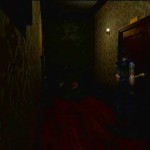 |  |
| One of the most threatening common enemies later in the game: The Hunters | Umbrella has some REALLY advanced computer systems… |
For those who care about differences between the Japanese and western releases, there were some fairly major ones. The live action cut scenes were censored to show less gore in the west, and scenes showing Chris Redfield smoking a cigarette were removed. More importantly though, the game was actually made generally more difficult. The ability to auto-aim at a nearby target by just pressing the R1 button was removed and the number of ink ribbons found throughout the game was reduced. It’s theorized that these changes were made to make the game less likely to be completed in a single rental. Lastly for completing the Japanese version, you’ll be treated to a vocal theme song by Fuchigami Fumitaka (“yume de owarasenai”) as the credits roll.
You don’t have to drag out your original Playstation and disc to play this either: It was ported to the Sega Saturn and Microsoft Windows 95, and was released in the form of the Director’s Cut version both physically and as a PSOne Classic on the Playstation Network. Not only that, but it was later released in a completely remade form on the Nintendo GameCube and Wii. Whichever way you decide to play this classic: You have once again entered the world of survival horror. Good luck!
